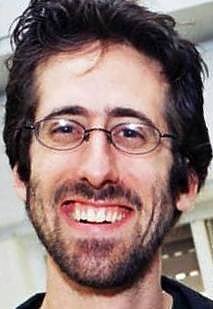In this week’s parshah, Yitro, we read of the revelation at Sinai that follows last week’s Exodus from Egypt. What is this relationship between freedom and revelation, between Exodus and Sinai?
The Chassidic master R. Yehudah Leib Alter of Ger explains that Sinai follows the Exodus because “the purpose of all the commandments…is so that every person of Israel be free.”[1] Revelation follows liberation because while freedom might have been initiated at the Exodus, it is only completed at Sinai.
Yet what kind of freedom is this? What kind of freedom is maintained by the revelation of laws and commandments which, on their surface, seem to limit freedom?
We can begin to answer this question through Isaiah Berlin’s famous analysis of the two kinds of liberty: negative liberty and positive liberty. Negative liberty is defined as freedom from—the freedom from restraint on one’s actions, enshrined in such concepts as human and civil rights. Positive liberty is defined as freedom to—the freedom to pursue a good life personally and communally, expressed in such rights as the right to vote, the right to organize, the right to education and the right to pursue economic stability.[2] While negative liberty, the Exodus from Egypt, is essentially concerned with the absence of restraint,[3] positive liberty, the revelation at Sinai, paradoxically often requires restraint for it to be realized.
Perhaps the clearest example of this paradox is found in our tradition’s attitude toward education. Learning Torah is understood by the tradition as a positive commandment that one is obligated to fulfill.[4] One is expected to find time to study and to utilize one’s financial resources to ensure that both oneself and one’s children are educated.[5] This requirement of education is understood as essential to freedom, to positive liberty, even though it seems to limit one’s individual freedom of time and financial priorities. At the completion of revelation Moses descends from the mountain with the tablets of the law in his hand: “the tablets were God’s work, and the writing was God’s writing, engraved upon the tablets.”[6] The Rabbis famously comment, “‘engraved (harut) upon the Tablets’—do not read it as engraved (harut) but rather as free (heirut) for there is no free person but one who engages in the study of Torah.”[7] Here we see the relationship between Exodus and Sinai. Only through the process of learning the skills, insight and wisdom to live an empowered life can one truly be free.
A later biblical injunction declares the laws of the Jubilee year. Every fiftieth year all indentured servants are freed, all debts are forgiven, the land is allowed to rest and each person returns to his or her ancestral holdings—a complete and equitable redistribution of land and a re-balancing of wealth. The Torah explains, “You shall proclaim liberty throughout the land for all its inhabitants.”[8] The Torah specifically articulates that the jubilee year is to guarantee freedom for all its inhabitants. The limitation on wealth acquisition for some (debt forgiveness, redemption of indentured servants and relinquishing land ownership) is necessary in order to maintain liberty for all.[9]
True freedom, then, is not only Exodus, freedom from oppression, but Sinai, the positive liberty of access to education and economic independence. The commandments that enjoin these freedoms, then, do not hamper liberty, but enhance it. It is in this way that Sinai, the giving of laws that restrict human action, actually completes the process of freedom. And these commandments apply to us still. We are called on to daily “proclaim liberty throughout the land.”
Yet in both our own backyard and across the developing world both these freedoms lie in danger. In many countries, even the negative liberty of human and democratic rights is unattainable. In other countries, access to economic well being, basic education, health care and the ability to participate in government are far from secure. For such countries Exodus may have happened, but Sinai awaits.
We must use our resources and our liberties to offer financial support, political action and direct service in pursuit of the goal of liberty for all. We are obligated by the lessons of this parshah to establish precisely those laws and protections, those restrictions, which allow true liberty to flourish and enable all the inhabitants of the world to access the resources and training necessary to achieve freedom. May we be inspired to redeem those enslaved, to proclaim liberty throughout the land, and to stand together at the foot of Mount Sinai, truly free.
[1] Sefat Emet, Ki Tetze, 660, Language of Truth, pp. 319-20
[2] Berlin, Isaiah., 1969, Two Concepts of Liberty, in I. Berlin, Four Essays on Liberty, (London: Oxford University Press, 2002).
[3] Though even negative liberty requires the restraining power of the state, who, for instance, maintains freedom of religion and thought not only by not imprisoning those who espouse radical views but also by stopping individuals or organizations from harming those they deem to be heretics.
[4] See Rambam, the Laws of Talmud Torah
[5] Rambam the Laws of Talmud Torah. 1:2, 3, 7, 8; 2:1, 2
[6] Shmot 32:16
[7] Pirkei Avot 6:2
[8] Vayikra 25:10, and incidentally the inspiration for the Shabbat zemer “d’ror yikra.”
[9] Land here is not simply seized from those who have purchased it. Rather, because this law is meant to structure ancient Israelite society, every purchase is understood as, in a sense, the rental of the property for the remaining number of years until the jubilee year, and priced accordingly. However, one is unable to make a contract which would permanently transfer ownership of ancestral land to another.

